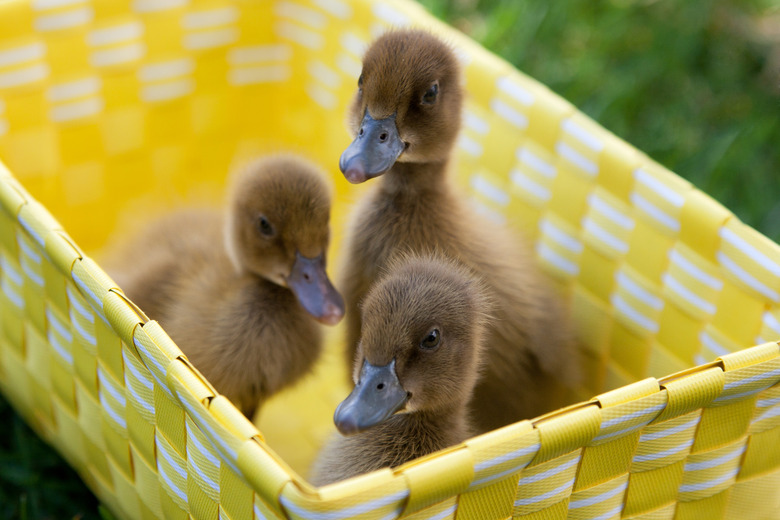How To Know The Gender Of A Duck
Ducks can be great pets, and they make wonderful additions to homesteads, farmettes, and more. When you own ducks, it is important to know the gender of each duck you have in your flock. Maybe you want only female ducks because of their egg-laying potential, or maybe you just want to keep a balanced ratio between the males and females for your ducks' health and for the well-being of the flock. There are a number of ways to determine the gender of a duck, but the effectiveness will also depend on your duck's age.
Duck vent sexing
Duck vent sexing
Ducklings are particularly hard to sex, and vent sexing is the only way to tell the gender of young ducklings. Once ducklings are about 12 days old, you can use the vent sexing method to determine the gender of the ducks.
According to Ducksworld, you will need to hold the duckling upside down so that his legs point away from you. Hold up the duckling's tail and use slow and gentle pressure to carefully open the vent. With the vent open, you should be able to see the duckling's genitalia. Females have a cone-shaped organ, while males have an organ that is longer, smaller, and more pointed.
However, vent sexing also has its drawbacks. It is possible to seriously injure or even kill a duckling using this method if you don't know just how much pressure to apply and just how to handle the duckling. If you need to have your ducklings sexed, please find a highly experienced duck breeder who can do this for you or who can carefully guide you through the process.
Duck foot size
Duck foot size
In some cases, your duck's foot size may give you an idea about its gender. Raising Ducks notes that once ducks are about six or seven weeks old, you may notice that a male duck's feet and legs are a bit out of proportion when compared to his body. Many male ducks have larger feet and thicker legs than female ducks.
The problem is that this method does not always work. Sometimes, the difference is very noticeable, while other times, you may hardly be able to see a difference in a male and female duck's feet and legs.
Duck body size
Duck body size
As your ducks grow, you may notice a difference in body size between males and females. Male ducks are typically larger than females. According to Avian & Exotic Animal Hospital of Louisiana, male Muscovy ducks tend to be about 30 percent to 50 percent larger than their female counterparts.
Duck tail feathers
Duck tail feathers
Your ducks' tail feathers may also indicate their gender. Metzer Farms notes that males often develop a curl to their tail feathers, whereas females do not. However, males can lose their curl feathers, and some duck breeds, like the Muscovy, do not develop curled tail feathers at all, according to Raising Ducks.
Duck voice sound
Duck voice sound
The most reliable way to determine the gender of a duck is by listening to her voice. Metzer Farms explains that by the time a duck is eight weeks old, you can hear a difference in the voice of a female versus a male. Female ducks tend to have a typical loud quack. Male ducks, on the other hand, have a much quieter and more raspy voice.
